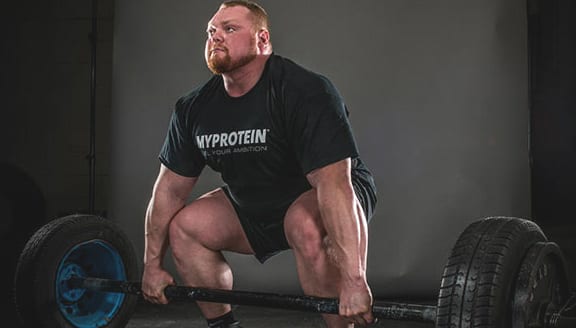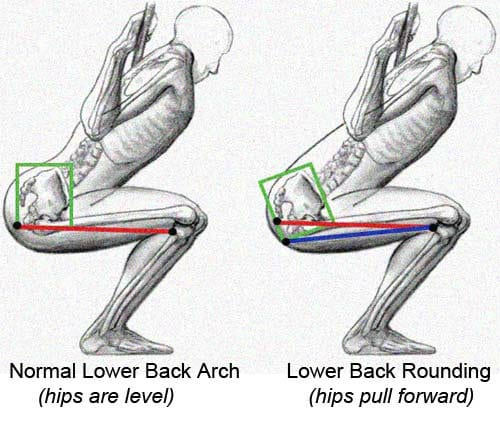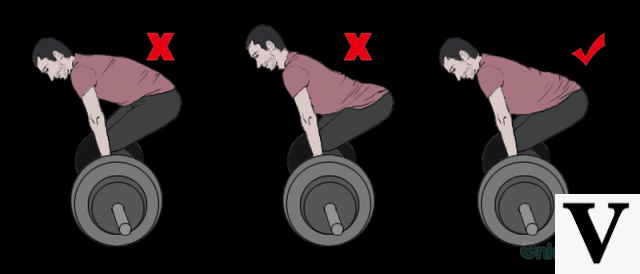By the healthiergang writer , student in Physiotherapy.
Deadlift
The deadlift is one of the best exercises you can do in the weight room. This consideration is based on the ability of this exercise to recruit all the muscles of the posterior kinetic chain, an element often overlooked in favor of the anterior muscles.
The benefits of this exercise don't stop there, it's very important to remember how the deadlift (if done correctly) plays an important role in preventing the onset of postural problems or joint pain.
Still the deadlift allows a rapid progression in terms of weight used and therefore also in terms of results.
In short, the deadlift is an exercise that should not be missing from a well-structured training program. Failure to perform this exercise correctly is not a good reason to exclude it from your training.
On the contrary, you have to work on the things you are not able to do also because they are probably the ones you need most if you want to continue improving your performance and skills.

How is it done correctly?
Before going into detail and talking about the (relatively) common problem of "lower back rounding" it is necessary elucidate the key points at the basis of a correct execution of the deadlift.
- The initial position provides that the bar is positioned perpendicular to the middle of the foot.
- Knees must be bend forward until your shin is in contact with the bar. The pelvis must be pushed back in order to recruit hip joint extension as the primary function.
- At the same time, the pelvis must be kept in a position that allows do not jeopardize the lumbar area: the pelvis must be kept in anti-version.
- Anti-version of the pelvis means that this is rotated forward.
- To better understand this position it is useful to try, from a standing position, a rotate the pelvis back and forth.
- Rotating the pelvis backwards accentuates a kyphotic lumbar position, or at most neutral, if instead it is rotated forward, it extends the lumbar area. this last position is the one that must be sought during the execution of the deadlift.
- Also the lumbar muscles it must be contracted in order to prevent flexion of the spine.
- The chest should be kept directed forward; this is achieved by extending the thoracic area or by contracting the back muscles and pushing the shoulder blades towards the pelvis.
- This is also facilitated by the shoulders which must actively push the bar against the shins.
- It is as if you are doing a straight-arm pull down by pushing the bar against your shins (if you feel the pressure of the bar against the bone during the repetitions, you are doing this correctly).
- The shoulders must also be them perpendicular to the bar.
- The position of the head is a debated topic: on the one hand there are those who argue that this should be kept in alignment with the rest of the spine while others argue the value of a cervical extension.
- A cervical extension, or gaze therefore turned upwards, is useful in keeping the rest of the spine in a position of strength (neutral or slightly extended) and there are no serious consequences as the load does not reach the neck but more underneath, near the shoulder girdle area.
- This is the starting position of the body; to make the body and the barbell one and therefore not to waste energy when starting the movement, it is necessary to apply a certain tension to the barbell while maintaining the position described.
- From this position start the movement by imagining that you are pushing the floor you are resting on, when the bar begins to reach the level of the knees imagine to project the pelvis against the bar by executing a strong contraction of the buttocks.
- The dorsal contraction and the push of the shoulders must be maintained during the whole movement. If this step is done correctly, this applied force causes the bar to meet the pelvis as the bar passes the knees.
- Conclude the movement with a strong contraction on the part of the buttocks and at the same time actively adduce the shoulder blades so as to involve also the central part of the trapezius and also the lower part.
The abducted and lowered shoulder blades should be a consequence of the position that must be maintained during the entire execution. It is possible though greater contraction of these muscles at the end of the repetition.
Lower Back Rounding
Another crucial point in performing the deadlift is to keep the lumbar area contracted and therefore extended (or neutral). This is the problem that most people have in common who fail to perform a correct repetition of this exercise. Lower back rounding can be:
- present from the beginning of the performance
- show up during the performance
In the first case it is a problem of pure joint mobility that prevents the achievement of the correct starting position. In the second case, the reasons can be different, the most common are: wrong positioning or insufficient force with respect to the load used.

Mobility for the deadlift
The degree of mobility required to perform the deadlift has a physiological level of joint mobility.
Failure to obtain it is a consequence of muscle stiffness or particular morphological characteristics of one's joints.
On the second case there is little to do, if not to find an amplitude of the "stance" (distance between the feet) optimal or raise the bar slightly. If the problem is due to muscle stiffness, it is necessary to consider which muscles are responsible for these stiffness.
The main defendants are the hamstring muscles or semitendinosus, semimembranous and long head of the hamstring (the short head does not originate from the pelvis and therefore has no influence on its positioning).
Combining stretching, myofascial release, and mobility exercises is helpful to relieve stiffness. Stretching is simple: while seated, bring your pelvis anteversion and extend your knees while keeping your legs in front of you.
Even holding this position should feel a good stretch in these muscles. If you want to make the exercise more difficult, place your feet on a higher and higher elevation.
Myofascial release is achieved passing the area covered by these muscles on foam roller for about 2 minutes per thigh, focusing on the areas where the greatest discomfort is felt.
A good mobility exercise can be to maintain the position of maximum stretch during the Romanian deadlifts for about half a minute.
The weight used will be low and the purpose of the exercise is to maintain lumbar extension by progressively reducing the height at which the bar is located. Another very useful exercise are the semi-straight leg deadlifts working on one leg at a time, the other lower limb follows the trunk.
This exercise is very useful because it allows you to work on a high stretch and at the same time keep the affected muscles under tension.
Positioning problems
Positioning problems are often due to a wrong conception of the exercise. Often we tend to bring the pelvis too low, trying to emulate the squat.

This forces the knees to move forward and then to increase the load on the work of the lumbar area (because the weight moves forward and the center of gravity is altered). The deadlift requires that the pelvis is below the level of the shoulders and that the movement performed is mainly an extension at the level of the hip.
Bringing the pelvis too low also leads to an inevitable loss of position as soon as you try to raise the bar.
The body puts itself in the most favorable position and then the pelvis snaps up. The solution to this problem is to simply position the pelvis higher. Ikl lower back rounding can also be a problem bound to a lack of strength in the legs.
If you follow the execution described in the previous article you can see how the movement is mainly borne by the lower limbs and buttocks. The lumbar and back muscles do only isometric work.
Since there is a lack of strength on the part of adequate muscles, the body tends to recruit other muscles to perform the movement and therefore the lumbar. In order for a muscle to make a movement it must first stretch and in the case of the muscles that extend the lumbar region there is a flexion of this area.
The solution to this problem is simple: become stronger in the muscles of the thighs and pelvis. If the correct execution criteria are respected, there can be no risk in performing the deadlift; consequently there is no reason to avoid the benefits this exercise can bring.
It is necessary to first obtain a solid technique and then work on the load.


























